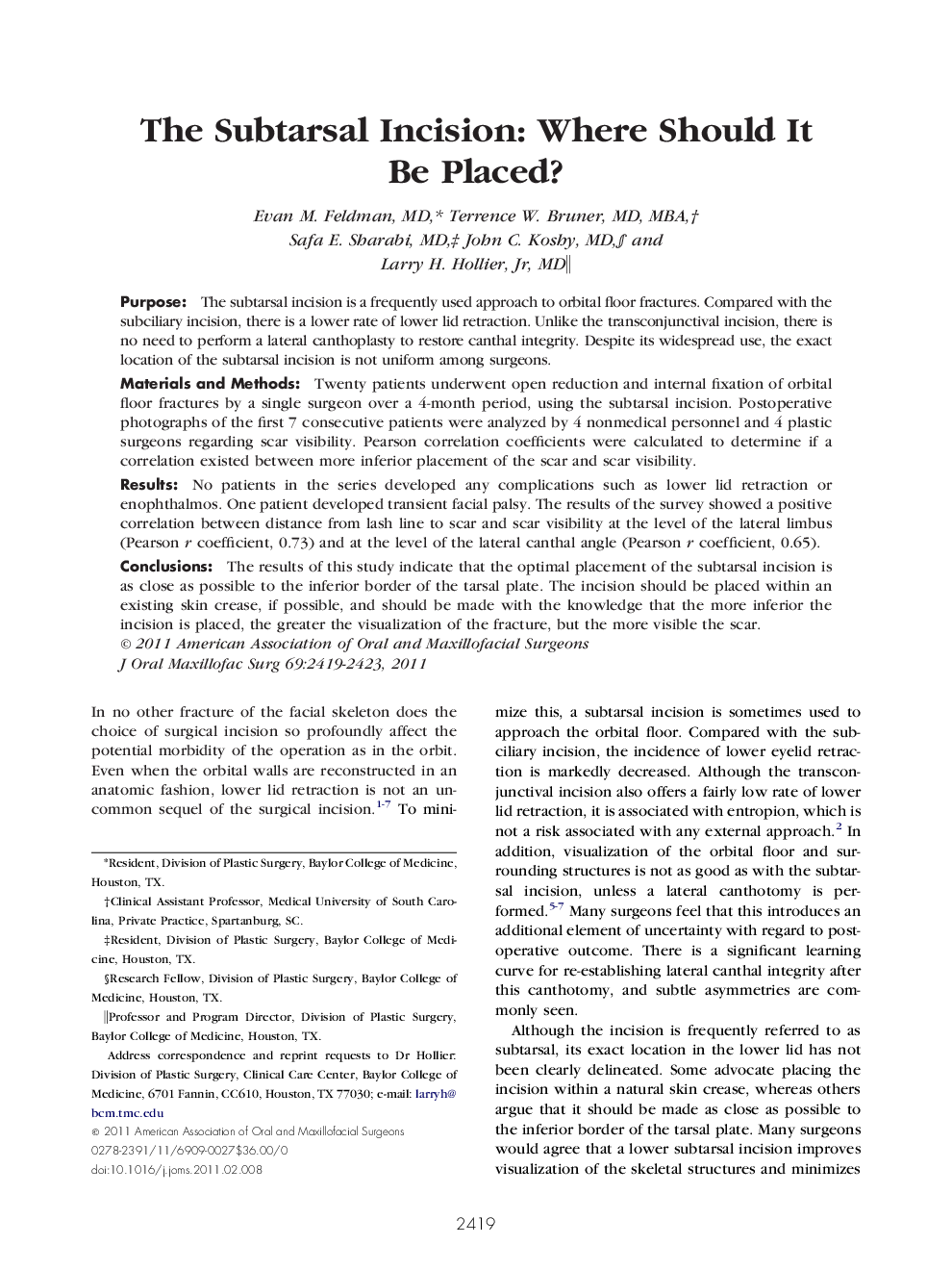| Article ID | Journal | Published Year | Pages | File Type |
|---|---|---|---|---|
| 3156874 | Journal of Oral and Maxillofacial Surgery | 2011 | 5 Pages |
PurposeThe subtarsal incision is a frequently used approach to orbital floor fractures. Compared with the subciliary incision, there is a lower rate of lower lid retraction. Unlike the transconjunctival incision, there is no need to perform a lateral canthoplasty to restore canthal integrity. Despite its widespread use, the exact location of the subtarsal incision is not uniform among surgeons.Materials and MethodsTwenty patients underwent open reduction and internal fixation of orbital floor fractures by a single surgeon over a 4-month period, using the subtarsal incision. Postoperative photographs of the first 7 consecutive patients were analyzed by 4 nonmedical personnel and 4 plastic surgeons regarding scar visibility. Pearson correlation coefficients were calculated to determine if a correlation existed between more inferior placement of the scar and scar visibility.ResultsNo patients in the series developed any complications such as lower lid retraction or enophthalmos. One patient developed transient facial palsy. The results of the survey showed a positive correlation between distance from lash line to scar and scar visibility at the level of the lateral limbus (Pearson r coefficient, 0.73) and at the level of the lateral canthal angle (Pearson r coefficient, 0.65).ConclusionsThe results of this study indicate that the optimal placement of the subtarsal incision is as close as possible to the inferior border of the tarsal plate. The incision should be placed within an existing skin crease, if possible, and should be made with the knowledge that the more inferior the incision is placed, the greater the visualization of the fracture, but the more visible the scar.
